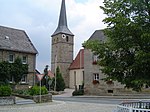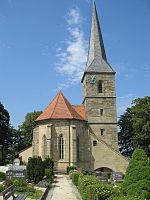Glashütten, Bavaria
Bayreuth (district)Municipalities in BavariaUpper Franconia geography stubs

Glashütten is a municipality in the district of Bayreuth in Bavaria in Germany.
Excerpt from the Wikipedia article Glashütten, Bavaria (License: CC BY-SA 3.0, Authors, Images).Glashütten, Bavaria
Bayreuther Straße, Mistelgau (VGem)
Geographical coordinates (GPS) Address Nearby Places Show on map
Geographical coordinates (GPS)
| Latitude | Longitude |
|---|---|
| N 49.888805555556 ° | E 11.448533333333 ° |
Address
Bayreuther Straße 22
95496 Mistelgau (VGem)
Bavaria, Germany
Open on Google Maps










